Lawn Mower Troubleshooting and Repairing Tips
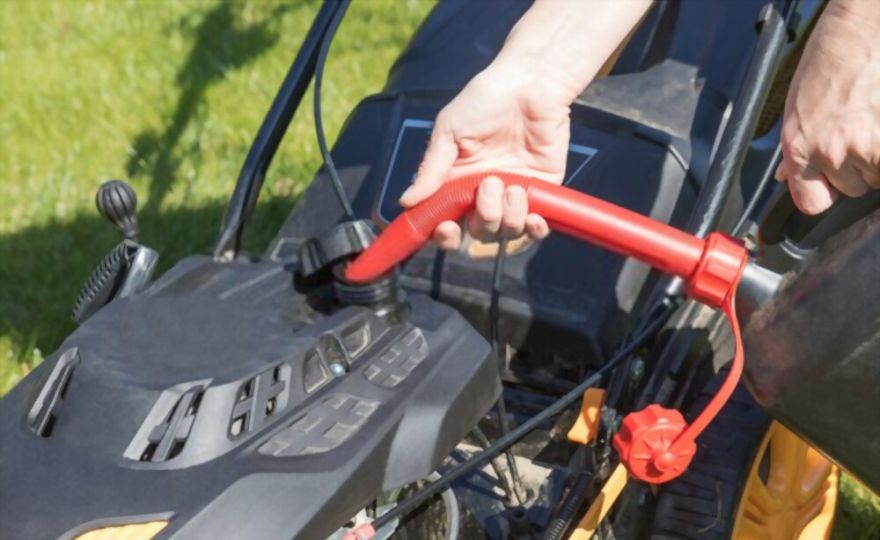
Imagine a situation when you want to mow your lawn, but your lawn mower starts then dies. Or worse, the lawn mower won’t start after all your effort. I remember this happened to me once. I had to spend hours cracking my head to figure out how to fix a lawn mower that won’t start. It’s so annoying to be all prepared to cut your lawn short, only to be disappointed by the lawn mower.
If you are not knowledgeable, it takes time to figure out what’s wrong with your mower. Well, it doesn’t have to be a hard thing. If you have experienced these problems with your mower, here are some answers and what to do in each scenario. However, these lawn mower troubleshooting tips depend on your types of lawn mower. But, let’s first figure out answers to the burning question on how does a lawn mower work?
How a Lawn Mower Works
A lawn mower engine is similar to that of your car, so don’t panic. The only difference between the two is that a lawn mower engine is smaller than the one in your car. So that car engine knowledge you have is crucial to fixing your lawn mower. Some say a lawn mower is just a small car with a spinning blade on the bottom. Exciting right. So, let’s see how this fascinating machine works. Before you start your mower, ensure you have enough fuel. Carefully add it with a funnel to avoid spillage.
When you make those pulls on the belt, the engine starts to spin, sucking fuel and air inside. Just like in your car, your mower carburetor mixes fuel and air before going into the engine. The spark plug ignites the mixture of air and fuel. The mixture gets electricity from a flywheel that rotates along with the engine. The flywheel has a magnet attached to it, which passes over an ignition to create a magnetic field. This generates electricity and sends voltage to the spark plug.
Troubleshooting lawn mower that fails to run
Let’s say your lawn fails to start. Don’t panic. First of all, for any lawn mower to function well, it needs fuel, air, and spark. Without any one of these, your mower won’t start. Thus, the first thing to do is to check if any one of these is present. To solve these challenges, you would need the following:
✅4-in-1 screwdriver
✅Adjustable wrench
✅Needle-nose pliers
✅Rags
✅Rubber gloves
✅Socket/ratchet set
✅Carburetor cleaner
✅Carburetor or carburetor inlet needle and seat
✅Fuel
Let me show you how to investigate each of them.
Check Fuel
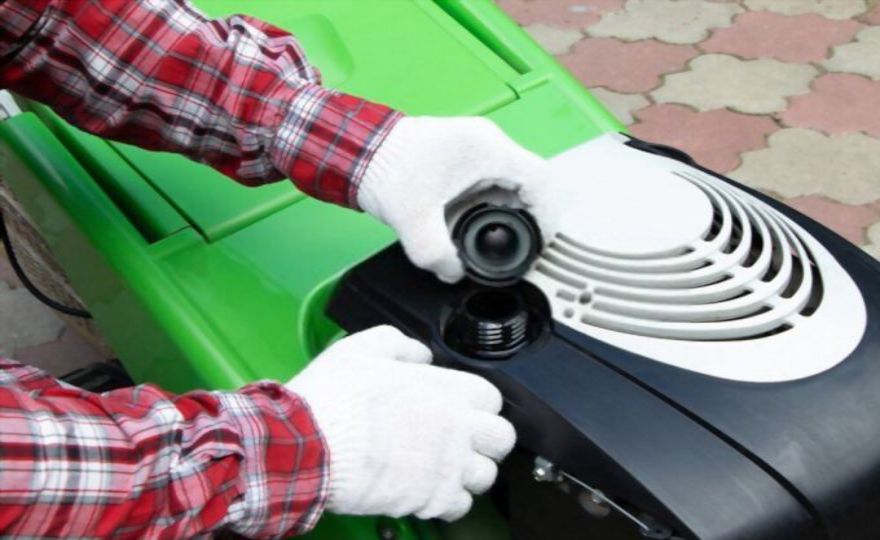
The first thing to check is your fuel. You recall I advised you to check if your mower has enough fuel before you start it. Well, the reason is to avoid wasting your energy cranking without the mower starts. This might be the apparent reason for your mower failing to start. Also, check the carburetor. Like I said before, the carburetor is responsible for mixing fuel and air. So, it is the first place to check for fuel.
Fuel flows as from the tank to the carburetor. Its role is to create an explosive mist of fuel mixed with air. The mist is sucked into the engine to be burned and provide power. Hence, the carburetor may be dry, which means it hasn’t received fuel. If that’s the case, pour a little fuel into it. If it’s dirty, it needs a good blowout with an aerosol can of carburetor cleaner.
Another place to check is the mower’s fuel filter. Make sure it’s not blocked and limiting the flow of fuel. The engine can’t get fuel if the fuel filter is plugged or the carburetor inlet needle is stuck. Remove the fuel line to check if the fuel filter is there. Fuel should run out. If it doesn’t, take out the fuel line in front of the fuel filter inlet. If fuel flows, the filter is clogged. Replace it. If you still don’t get any fuel, the fuel line is plugged. Check inside the tank for any fragments that might block the outlet.
Check Air Movement
Just like your body, your mower also needs to breathe. When your mower fails to start, verify if there is maximum air circulation. The engine air filter on most mowers has a tough job of cleaning the air. It succumbs to dust, dirt, and grass clippings flying around at a high rate of speed. So when your mower refuses to start because of air, the air filter is a good place to start checking. In keeping those out of your motor, the filter sacrifices itself. It eventually chokes on all of the particles it has collected, requiring its replacement.
Check Spark Plugs
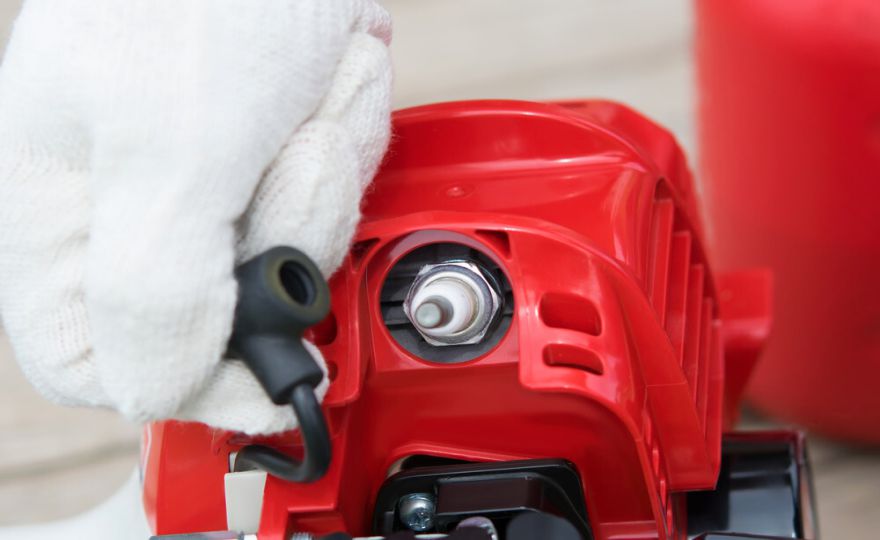
If your mower refuses to start, check the condition of the spark plug. Most lawn mowers come with a single spark plug design, so it shouldn’t be a big problem. Ensure that it is snuggly connected to the spark plug wire that feeds it the power needed to fire. If you find it to be in good shape, you should remove the spark plug. Check if the plug has not been ruined. For a new plug, just clean up the dirt but if it’s damaged, replace it. Another error to mind about the plug is wetness. There is no way a wet plug will make the engine start. Clean the plug with carburetor cleaner and let it dry. You need a solvent to remove oil residue.
Troubleshooting lawn mower that runs and turn off
Let’s say your mower starts and then gives up after. There are several errors you need to look for and how to fix them. Let’s check them out.
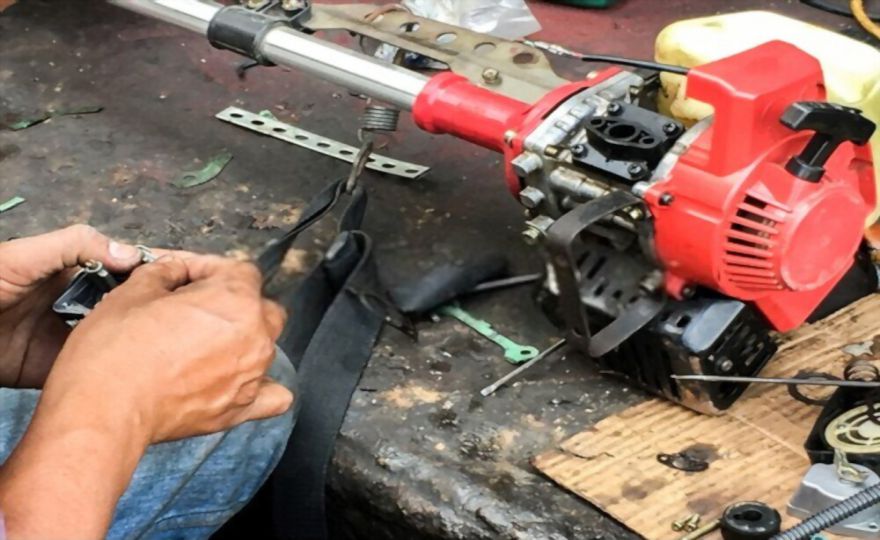
Cause: Old Fuel
With a focus on saving, we tend to leave our fuel without being used for a long time. While it is an excellent way to make sure you don’t waste your fuel, it is bad for your mower. When you leave fuel for a long time in your mower, a residue is formed in its tank. Evaporation of the volatile fuel component leaves particles that form a residue in the tank. The particles clog your mower’s interior parts. The resulting problem is fuel flow restriction, causing your mower to start and die in a bit.
✅ Solution
The ideal thing is to drain out the old fuel and put in the fresh fuel and a fuel stabilizer. However, throwing out close to a full tank of fuel sounds wasteful, right? If your mower tank is less than half full of old fuel, you might try adding new fuel to dilute the impurities. If the old fuel is more than half a tank, siphon it out and use it for something else. Fill in the tank with fresh fuel.
Always add the stabilizer after every situation. The stabilizer can even enhance the quality of fuel. It also prevents residues from forming while making the fuel efficiency for up to two years. Experts recommend a stabilizer such as Sta-bil Fuel System Stabilizer. Remember to read the directions to know the proper fuel to stabilizer ratio for your mower.
Cause: Too Much Oil in the Reservoir
Too much of anything is always a problem, even in a machine. Your carburetor may be clean, and the spark plugs firing, but your mower might not start due to too much oil. You may have been tempted to over-fill your mower’s oil reservoir. Don’t be too proud because this is a problem that needs solving. Don’t panic; it’s not as terrible as you may think. If you notice white smoke coming out of the engine, it’s a sign of too much oil.
✅ Solution
To know exactly if the problem is excess oil, simply tilt the lawn mower up and then put a heavy object on its handle to hold it up. Doing this circulates the oil into other parts of the engine. Rerun the machine after an hour. If it doesn’t stall after running for some time then, the cause of stalling is excess input of oil.
Dip a stick to determine the present level of oil, then tilt the mower on its side to release some of the oil. Catch up the oil with a pan or plate. Put back the mower to its original standing position, measure the oil with a stick and put oil if necessary. Recheck the level of the oil until the full level is reached. Fixing this problem is very easy. All you need to do is drain it using a siphon or drain it by tipping your mower.
Cause: Dirty Spark Plug
For a spark plug to effectively provide the spark that ignites the air and fuel mixture, it should be clean. A defective plug is likely to prohibit your mower from starting. A dirty plug, on the other hand, starts your mower, and then it dies. The dirt can be due to the carbon build-up inside the socket of the spark plug. Furthermore, check the spark plug cap for carbon deposit.
✅ Solution
The dirt won’t be a problem if you clean the spark plug wiping out the carbon deposit and oil. If the dirt has caused some degradation, it is wise to replace the old plug with a new one. When removing an old spark plug, simply unhook the spark plug wire and remove it with a spark plug socket. Measure the gap between the two conductors using what is called a spark plug gauge.
Ensure you know the recommended size of the gap for your model. Use the gauge to adjust the gap by bending the conductor slightly until the gap is correct. Now, it’s time to put in the new plug and attach the spark plug lead. Mind not to over-tighten when putting in place. To avoid being lost, I advise you to watch online videos about removing and replacing a spark plug.
Let See A Video of lawn mower troubleshooting
Lawn mower problems that requires an expert
Troubleshooting your lawn mower is easy and exciting. However, as much as you might want to “do it alone,” there are instances you have to call an expert. That is if you are not one yourself. I think the following problems have to be taken higher up.
✅ Fuel Tank or Fuel Line Blockage
If the fuel isn’t getting to the engine and you have checked all the parts but can’t find the fault. Well, this is the time to use that phonebook of mechanics around you. Consider that blockage as a problem that might take a trained eye to identify and fix.
✅ Worn out carburetor
A worn-out carburetor might be a serious problem if you are not an expert. Remember, I emphasized the importance of a carburetor. To replace the worn-out carburetor, you might need to call an expert.
✅ Faulty Choke
When you start your engine, the linkage attached to the diaphragm closes up the choke. Air is sucked out of a small depression by the low pressure in the carburetor. This takes some time because the channel is very narrow. The pressure pulls down the diaphragm membrane in the depression. This opens the choke after a delay of a few seconds. If any deposits are clogging this narrow groove, this could prevent the choke opening on the start-up of the engine. If you are not a professional, identifying this problem is challenging. And restoring the delicate balance required to fix your engine needs professionals.
✅ Punctured Diaphragm
When a mixture screw is turned clockwise, there is a punctured diaphragm signaling a lack of response. Despite the screw being tightened, the engine continues to run all the way. Excessive fuel causes the engine to misfire, producing a cloud of black smoke. This results in the diaphragm being worn out and punctured, thereby pumping fuel. The only solution is a replacement part. This requires experts to sort it out.
Check Our Husqvarna Zero Turn Review
Husqvarna Z254 Review and Buying Guide
Consider High-Quality Engine To Avoid lawn mower problems
Getting rid of mower challenges starts from choosing the best lawn mower engine to mastering the basic lawn mower maintenance. You have to be vigilant when choosing an appropriate engine. Depending on your taste, you should consider some factors when looking for the best engine.
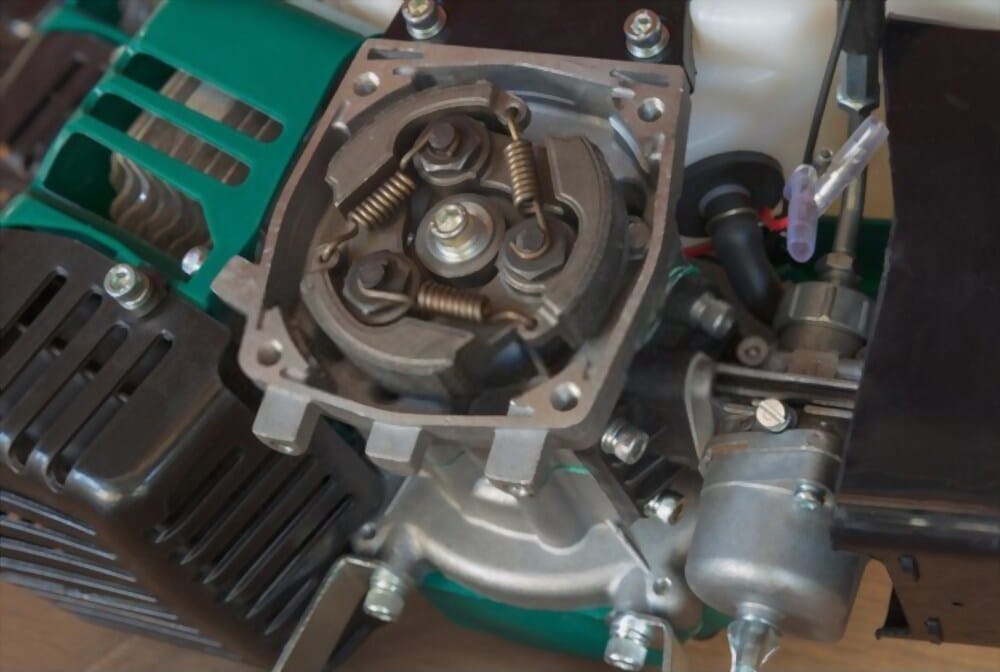
✅ The Reliability
It doesn’t matter how frequently you use your lawn mower; engine reliability is a crucial factor to consider. Reputable brands guarantee reliability. A sophisticated quality ensures a longer lifespan. I wouldn’t advise you to rely on cheap and unbranded engines when looking for the best lawn mower engine. You may end up losing these so fast.
✅ The Power
Every lawnmower engine ranges between 140cc and 190cc. You should know to choose the ideal engine. Thus, more ccs mean more power. The kind of work you want to do determines the power you have to choose. Do you plan to cut extra-long grass? You will require a more powerful engine if this is your plan. On the other hand, a well-maintained, short lawn can be used with a less powerful lawn mower.
✅ The Maintenance
One crucial factor in determining the lifespan of your engine is the frequency of your maintenance. When you frequently change oil and air filter, the engine lives a longer time than if you leave it unmaintained. Also, mind the engine oil that you use, ensuring that it doesn’t stay dormant for a long time. Engine designed for commercial use generally lasts longer than those for domestic use. But even if it’s a commercial engine, without proper maintenance, it won’t last long.
Tips for Lawn Mower Maintenance
When mowing, look out for twigs, stones, and other objects and avoid mowing in the dark; your mower needs maintenance when these accumulate. Also, when your lawn mower stops starting or starts then dies, maintenance is required. Generally, basic lawn mower maintenance takes place at the beginning and end of the season. That is before and after mowing your lawn. When doing your upkeep, pay close attention to the following basic lawn mower maintenance checklist.
Familiarize yourself with the owner’s manual: If you love your lawn mower, the first thing to do before the first lawn is to read the manual. This gives you the knowledge of what you should do before and after you cut your grass. Maintenance tips are also found inside.
Replace the spark plug: Replace your plug annually. This prevents your mower from facing starting problems.
Drain the fuel out if it’s the end of the season: Remember leaving your fuel unused can cause serious problems for your mower. Running the mower until all the fuel is used depends on whether you have finished your work or not. So, draining it is advisable. Alternatively, you can put the fuel stabilizer.
Clean your lawn mower: After cutting your lawn, remove grass, twigs, or stones that may be trapped inside your mower.
Replace the oil: Change the oil annually. The owner’s manual gives you the guideline on how to do so.
Clean or replace the air filter: Lack of enough air stops your mower from starting. Make sure you have a clean air filter to make your mower as efficient as possible.
Sharpen and balance the blades: Using blunt blades is not good for your mower. After cutting your grass, it needs to be levelled, and using unsharpened blades will not make it possible.
Fog the engine: If you don’t usually use your mower, lubricants can dry away over time. Your engine can be corroded. You need to fog some oil to stop this from happening. The owner’s gives you the guidelines on fogging.
Lawn mower lifts are also helpful in the maintenance and repair of your lawn mower. The lawn mower lifts can help you raise your all kinds of lawn mower in all safety. The work in all cases, whether you have to repair, change the blades, and clean or carry on routine maintenance.
Final Verdict
Overall, these lawn mower troubleshooting tips will make it easier for you to identify any problem with your mower. Also, keep in mind that maintenance starts from choosing the right engine which matches the uses of your mower. And, it is crucial to read the maintenance guide of your lawn mower. Again please be reminded that most of the lawn mower problems start in the carburetor. When your lawn mower refuses to start or starts then dies, start looking at your carburetor.
When you are not an expert on maintaining the carburetor, find one close to you. You can as well use lifts for easy maintenance and repair of your lawn mower. The way you take care of your mower determines how long it will last cutting your lawn. If you maintain your lawn mower very well, it will last approximately 10-15 years running well.

Kazi Taslim
Editor
Poweredgrip ensures an expert team of writers, to provide you with excellent informational and unbiased content. We are dedicated to giving you much smoother and best up to date information. We share the incomparable tricks, tips that give you awareness and confidence for making your buying decision. We are a very enthusiastic, dedicated and hard worker. Kazi Taslim is the Author and Editor of our experienced writing team.
Related Post
How to Clean A Chainsaw Carburetor
Cleaning your chainsaw carburetor is vital if you want to prevent as well as solve engine-related issues. The good thing about cleaning a chainsaw carburetor is that you can do it on your own. The process is pretty easy. All you need is to follow some very simple...
How Does A Chainsaw Work | An Easy Step By Step Guide
Chainsaw very an essential tool in our daily lives. Owning a chainsaw for the first time can be a fun experience especially if you into DIY tools. But if you don’t know how it works, operating it as a first-timer can be hard and dangerous. Although a chainsaw is a...
Chainsaw Tips for Beginners | Step By Step Beginners Guide
Twenty-first technologies have birthed very useful and efficient machines such as the chainsaw. This machine has phased out the old days of laboring tirelessly with axes. Now tree cutting is a quick, easy, and effortless process. Beginners may however find it a bit...
How to Reupholster A Tractor Seat | A Step By Step Guide
“As an Amazon Associate, I earn from qualifying purchases.”Getting your tractor seat reupholstered at the local upholster shop will cost you handsome money. Depending on your seat and design it might be $100 to $600. Now you can imagine how much you can save by...
How To Replace A Tractor Seat | Updated Guide
Well, it goes without saying, jabs and pricks from a worn-out tractor seat are as annoying as can be. They not only irritate the rider but also cause aches, pains, and bruises in places you least want. Now, why let yourself go through the excruciating experience of...
Backyard Relaxation Ideas | Sharing A Step By Step Guide
With the Covid-19 lockdown in place, staying indoors all day, every day has become the new normal. But it does have to be so when you have a backyard. There are a number of great backyard relaxation ideas that you can add to your backyard to revamp it and make it...






